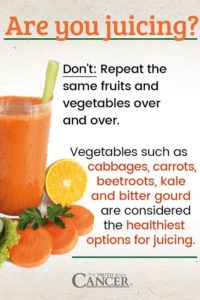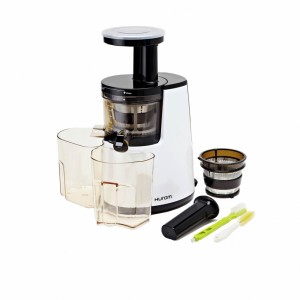Juicing can be a bit time consuming, but with careful planning, it does not have to be a chore. I juice daily for myself and my partner, a total of 32 ounces daily. Plus, several times a week, I do an extra juice for an afternoon snack which usually entails a specific organ detox live a liver or kidney detox. Here are some basic rules of the road to allow you time to juice and still carry on down life’s busy highway.
1. Keep your crisper drawers very clean and sanitized for storage of cleaned produce.
2. Plan your weekly juice recipes and make a shopping list accordingly. Shop once a week, with perhaps a small return trip for fresh greens halfway through the week. Add a few extra apples and carrots to your list. These basics go in most juice drinks and store well in the frig. Try a new ingredient or juice every week to keep the fun and variety going.
3. Clean ALL your produce when you return from the grocery store and create a storage system that works for your ingredients. I use a large square container for my carrots and a rectangular container for my celery. Be sure all produce is dried before storing. Place a white paper towel in the bottom of the container to catch any leftover moisture(I use Marcal made from recycled paper). Place in a colander to air dry while you finish cleaning other produce. I clean all produce in a sink of cold water with a 1/4 cup of white vinegar and allow 10 minutes to soak. Rinse thoroughly and dry. Place whole produce directly into the crisper drawers.
4. To peel or not to peel, that is the question. Generally, I do not peel my produce. When you use organic produce, as is recommended for any juicing or simply in general with all that is added to produce nowadays, there are fewer toxins on the skins and vinegar will remove a lot if not all. Many vitamins, phyto-nutrients, micro-nutrients, and healthy enzymes reside in the skins of the produce. JUICE THEM. Some exceptions are citrus. Using a vegetable peeler, simply remove just the outer rind or zest from the fruit if using a large amount of that particular fruit as the zest can be bitter and overpowering in the juice. I do not peel my 2 or 3 lemon slices for my juices. I like a little zing. But in watermelon lemonade, for example, you use 3 to 4 lemons. All the zest is too much, so remove 2/3 of the zest. (Put your citrus zest into white vinegar and allow to soak 3 to 4 weeks, then strain and use the vinegar as a window/surface cleaner.) Always peel ginger. Never peel apples, pears, plums, cucumbers, carrots, or pineapple. Peel beets only if the earthy flavor is off-putting.
5. What to buy???? It’s best to use fresh, organic produce that is ripe but firm or crisp. Crisp greens are critical, so you may have to make a second trip mid-week for round two of greens. Rotate your variety of greens every three to four days as the body acclimates to greens quickly, reducing the effectiveness of the juice. Shop around. Look for local farmer’s markets with local growers. Know your grower if you can. Let them know you are juicing, perhaps he or she can grow specific ingredients for you. Grow produce yourself if you can. Herbs are easily grown in pots. Cucumbers can be grown in a 5 to 10 gallon, recycled pot from your local nursery and trained on upright tomato stakes. Be creative with your mixes once you get a feel for what you like. Buy a juicing cookbook like The Juicing Bible by Pat Crocker, as it is a great resource for all kinds of ailments and it covers hundreds of ingredients and what those ingredients target in the body. Add turmeric to your juice, available at Indian and other specialty markets. Grow your own wheatgrass indoors year-round(see my post under categories with the same title).
6. At first, you may want to begin with a 50%/50% blend of fruit to vegetables to learn your taste buds. But, begin moving towards a 70%/30% blend of vegetables/fruits to reduce to sugar intake. Remember, however, that the body can handle a lot more fruit sugars than processed white sugars or (YIKES) high-fructose corn syrup. Lost this latter ingredient from your diet as it is produced from GMO corn and is in most every processed food and fast-food that exists in the U.S.
7. Love the process. Repeat it daily. Juice, juice, juice. Remember, everything in moderation. I only juice for breakfast and afternoon snacks. I eat two big solid meals a day. Juicing allows me to be able to eat most anything I want because the juices cleanse and repair. But, moderation is always key. A pound of bacon everyday is not a healthy choice for anyone. 🙂 Juice what feels good for your body, but remember, if you have cancer or other life-threatening disease, use additional juices for the day. (According to the Gerson Institute, cancer patients should consume 9 to 13 juices per day. For more details on this therapy, email me directly.
Categories: Juice Recipes, Juicing Tips |
Comments Off on Tips, Shortcuts and General “rules of the road” on the Juicing Highway to Recovery


